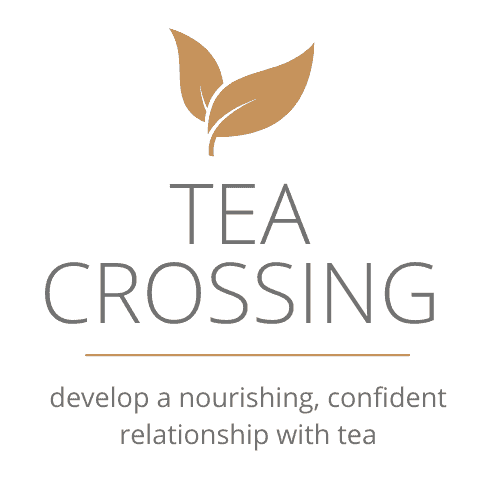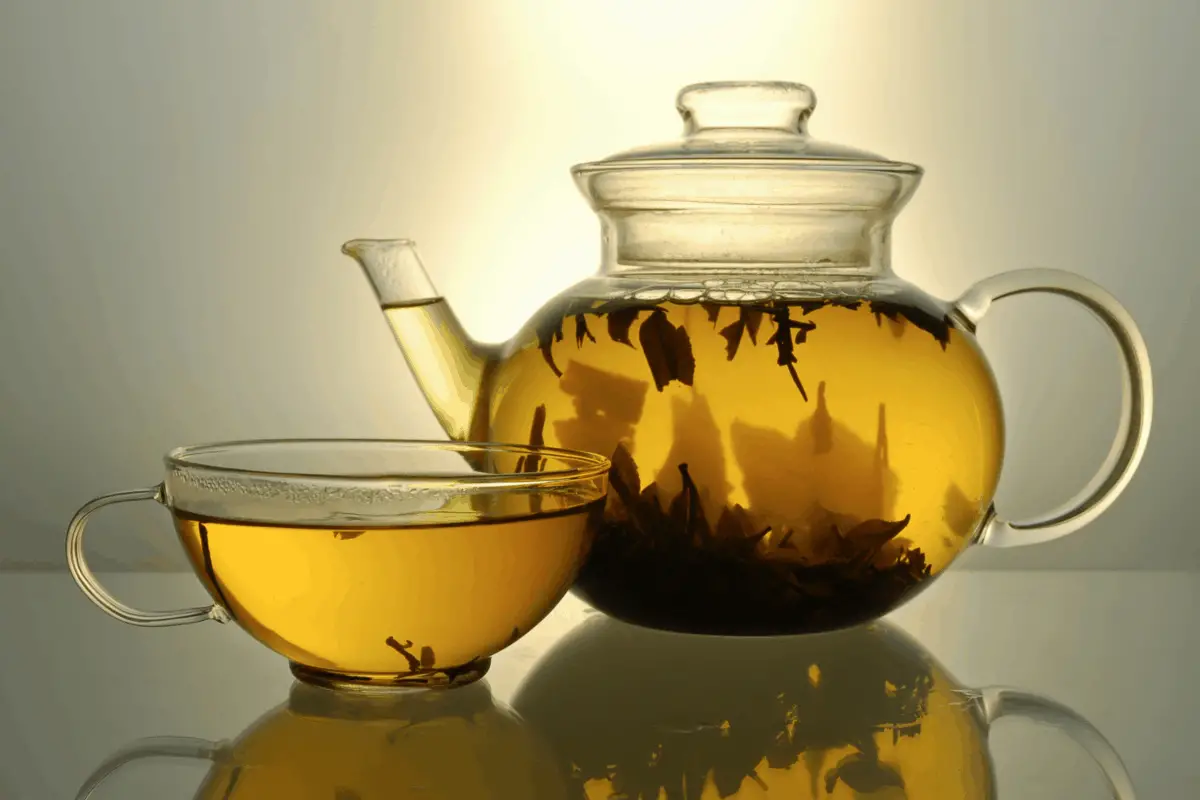I have loved teapots for a very long time and I don’t even really know why. I loved them before I even began drinking tea. I just felt drawn to everything they represent, including the deeply comforting ritual of thoughtfully creating a nourishing cup of tea. But do teapots really affect the taste or is that my imagination? Some believe a teapot is an essential part of the brewing process, while others view it as a visually pleasing but unnecessary tool. Opinions and traditions aside, let’s talk about whether or not tea really tastes better from a teapot.
Steeping tea in a teapot can improve the final flavor. This is because teapots tend to retain heat better, provide more oxygen for tea leaves, and regulate the steeping process, all of which create a better-tasting result.
A tea’s flavor and depth is dependent on a number of factors that a teapot can help you to control. Some of the factors include:
- The material of the steeping container
- The amount of oxygen the tea is exposed to
- The type of tea used (“true,” herbal, infusion, etc.)
- The steeping temperature and time
Just to be clear, what I am talking about here is actually steeping tea in a teapot, not simply heating the water. Every element of a teapot can be used to change the brewing experience and outcome.
The distinction is key because teapots are beneficial to the brewing process. This is because they offer more control over each variable…all of which can affect how the tea tastes.
While cups and mugs can also be used to recreate the same tastes in tea, it can be harder to achieve the same depth of flavor.
Let’s cover the details you need to know.
How Do Teapots Affect A Tea’s Taste?
There are several teapot factors that can affect how your tea tastes. I’ve listed the primary factors above (and again below).
For ease of reference, I’ll work down the list to show how a teapot can be beneficial to the process, in addition to how teapot alternatives will affect the final taste.
- The material of the steeping container
- The amount of oxygen the tea is exposed to
- The type of tea used (“true,” herbal, infusion, etc.)
- The steeping temperature and time
“Every element of a teapot can be used to change the brewing experience and outcome.”
TEA CROSSING
What are the Best Types of Teapots, Teapot Materials, and Uses?
Teapots are available in several types of material, from jade to stainless steel and more.
The Best Teapot Materials
You will find a wide variety of teapots on the market, all of which can be made from a range of materials, including:
- Glass
- Porcelain
- Clay
- China
- Stoneware
While you have several options, glass, porcelain, and clay are by far the most popular materials for teapots. This is because each has specific benefits either unique to that material or shared among all three types.
Of all types of teapots, these three materials are the best at holding temperature, and glass has the added advantage of being able to see the tea. Clay pots also hold heat well but are specifically designed to absorb the flavor of a brew and retain it for the next batch. The most famous example of this is the Yixing clay pot, so named because the clay can only be found in Yixing, China.
If you can’t afford or don’t like these materials, don’t worry! Teapots made of china or stoneware can be just as functional, affordable, and beautiful. Though they don’t hold heat as well, this problem can be solved by pre-warming the pot with hot (but not boiling!) water.
The Worst Teapot Materials
No matter what type of teapot you choose, I strongly recommend avoiding synthetic materials that oxidize easily. Synthetic materials can negatively affect the flavor of the tea despite not being harmful to ingest. These include:
- Pewter
- Aluminum
- Uncoated iron
- Plastic
This same information applies to other steeping containers if you’d prefer not to use a teapot. However, teacups and mugs may be harder to find depending on the material. For example, Yixing clay cups may be harder to find than Yixing clay teapots.
Additionally, because the majority of cups and mugs don’t come with lids and hold smaller amounts of liquid, it may be harder to retain the temperature of the tea for long periods of time.
How Does Oxygen Exposure Affect Tea Leaves?
Oxygen plays an important role in what type of tea is produced, and some “teas” aren’t actually true teas at all.
In addition, as you’re preparing to make tea you also play a part in this oxidation process. The longer you heat or boil your water, the less oxygen is available for the tea leaves added later on.
This is the reason it’s recommended to bring the water up to the proper temperature for each type of tea rather than simply boiling water and letting it cool down.
And while the tea steeps, leaving the teapot lid off allows more oxygen to enter the brew.
Teapots have one major advantage over smaller containers like cups and mugs in relation to oxygen: they simply hold more water, meaning that there’s almost always going to be more oxygen available for the tea leaves than in a mug.
However, when it comes to an external oxygen flow (from the air, not the water), mugs and teapots are equally matched. Removing the lid from a teapot creates the same access to oxygen that a mug automatically has because of how it’s shaped.
Let’s take a closer look at these facts.
Oxygen Exposure in True Teas
Oxygen exposure can impact how tea tastes throughout its lifetime, from the moment the leaves are picked to when you brew them at home.
When the Camellia sinesis plant is harvested, it’s processed differently to create the types of teas listed above. The amount of oxygen the leaves are exposed to during processing determines whether you’ll end up with white tea, black, or oolong in your cup later on.

There are generally considered only to be six types of “true” teas, which are:
- White tea
- Yellow tea
- Green tea
- Oolong tea
- Pu-erh tea
- Black tea
Technically speaking, the only “true” types of tea come from the Camellia sinesis plant. Other teas, such as herbs and infusions, are mixtures of the leaves, roots, flowers, etc. of various edible plants and are referred to as “tisanes.”
Oxygen Exposure in Tisanes
In addition to true teas harvested from the Camellia sinesis plant, there are many other types of herbal teas and infusions (tisanes) that can be affected by oxygen and the steeping process.

Additional types of tisanes include:
- Rooibos tea
- Yerba Mate
- Cacao tea
- All herbal teas
- All flower teas or infusions
Exposure to oxygen doesn’t play a key role in the production process in herbal teas like it does with true teas. However, using a teapot for steeping herbal teas and infusions can further help you to control the amount of oxygen the dried leaves are exposed to.
“A good rule of thumb is to use one level teaspoon of leaves per cup of tea. If you prefer a stronger tea, add more leaves.”
When it comes to all teas, including herbal or flower tisanes, another thing to keep in mind is the steeping temperature and the steeping time.
Let’s cover that next.
What is the Best Steeping Temperature and Time?
Each type of tea has different requirements for steeping temperatures and time.

The information below is a general guide. You may need to experiment with the temperatures and times below to create the perfect cup of tea.
| Type of Tea | Steeping Temperature | Steeping Time |
| White | 150 – 185°F (65 – 85°C) | 1-3 min. |
| Yellow | 150 – 170°F (65 – 77°C) | 1-3 min. |
| Green | 170 – 180°F (77 – 82°C) | 1-5 min. |
| Oolong | 180 – 200°F (82 – 93°C) | 3-5 min. |
| Pu-erh | 200 – 212°F (93 – 100°C) | 3-5 min. |
| Black | 200 – 212°F (93 – 100°C) | 4-6 min. |
| Herbal | 200 – 212°F (93 – 100°C) | 5-10 min. |
| Fruit | 190 – 200°F (88 – 93°C) | 5-10 min. |
A good rule of thumb is to use one level teaspoon of leaves per cup of tea. If you prefer a stronger tea, add more leaves. Don’t steep longer— this won’t make your tea stronger, just more bitter.
These same guidelines can be easily followed if you’d prefer to brew a cup of tea instead of a whole teapot.
However, it’s important to remember that smaller containers can have a harder time retaining heat, meaning that the water temperature may change before your tea is done steeping. The longer a tea needs to steep, the more you have to worry about this.
Another thing to note about using cups vs. teapots is that teapots have a wider surface area, meaning that tea has more space to brew. In turn, this creates a fuller, more mellow flavor, which can be harder to create when using a cup or mug.
So, Are Teapots Necessary?
Using a teapot doesn’t automatically mean your tea is going to taste better than if you’d used a mug. However, the way in which you use the teapot can positively impact a tea’s taste.
It’s true that teapots can have some advantages over cups, depending on the type and size of the teapot used. Overall, they tend to retain heat better, provide more oxygen for tea leaves, and better regulate the steeping process. What this essentially means is that you have more control over the tea and how it will ultimately taste.
That being said, this doesn’t mean that you can’t accomplish all of the above with a cup or mug. It may take a little extra work, but you can still achieve a taste you love.

